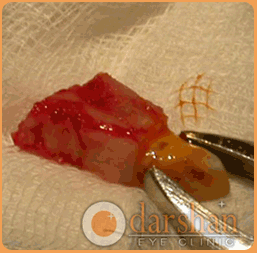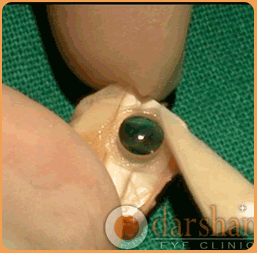- Home
- About Us
- Meet Our Team
- Facilities
- Services
- Expertise
- Anterior Lamellar Transplants
- Artificial Cornea
- Cataract Surgery In Children
- Complex Cataract Surgeries
- Corneal Infections
- Corneal Transplants In Children
- Dry Eye Disorders
- Keratoconus
- Lasik And Refractive Surgery
- Ocular Allergies
- Ocular Inflammation
- Ocular Surface Reconstruction
- Pterygium Management
- Secondary Iol Implants
- Sutureless Corneal Transplants
- Patient Information
- Academics
- Darshan Activites
- Contact Us
ARTIFICIAL CORNEA
Although a variety of surgical strategies exist to treat mild and moderate corneal disease, in the most severe end-stage conditions, the only procedure that can help restore sight is the use of an artificial cornea. The term used to describe this device is keratoprosthesis.
In patients with severe chemical or thermal burns of the eyes, drug reactions, autoimmune destruction of the conjunctiva, multiple surface surgeries, damage due to poorly fitted contact lenses, and other inherited conditions, the entire ocular surface is damaged and dry – resulting in a skin-like appearance and poor vision.
In such conditions, the use of living tissues as replacement seldom works, since the hostile environment of the ocular surface will produce a gradual destruction of the transplanted tissues as well. In these situations, the use of a plastic cylinder, of the appropriate power, can help restore visual function in these badly damaged eyes.
In order to retain the plastic cylinder in the eye, the use of an anchoring tissue is required. Although various approaches have been tried to use the keratoprosthesis for vision, the one with the longest follow-up and best success, remains the modified osteo-odonto keratoprosthesis (MOOKP). This is currently performed in only a handful of centers around the world.
First perfomed in India, with the help and guidance of Prof Falcinelli, by Dr Srinivas K Rao, it has produced good successful visual restoration in eyes otherwise considered blind. Since his initial experience in India, Dr Rao has then performed the procedure with good outcomes in Hong Kong and China. Although a complicated procedure, when used in appropriate patients, with careful attention to detail, it can help patients who cannot be helped by any other procedure.
In patients with milder disease, the procedure of Boston Keratoprosthesis can be performed, with good results.
ANTERIOR LAMELLAR TRANSPLANTS
Totally Dry Eye

Extraction of tooth

Artificial Cornea

After 3 months

Placement in patients eye

Final Result




